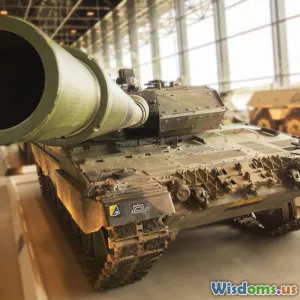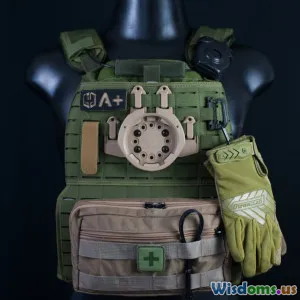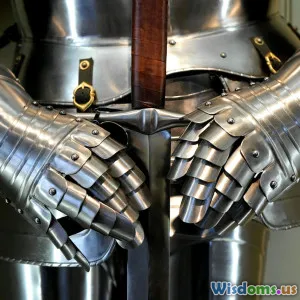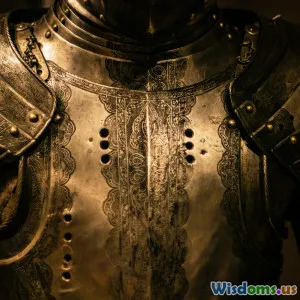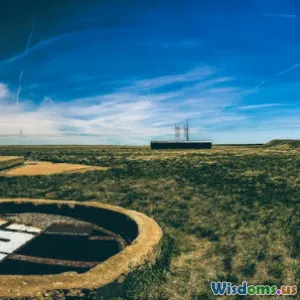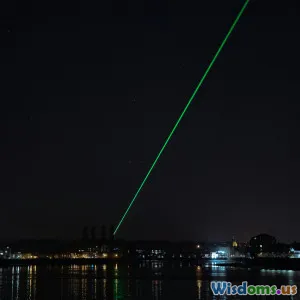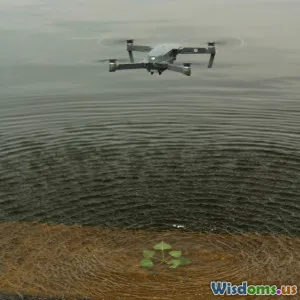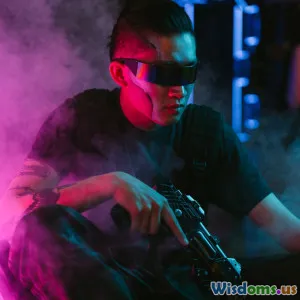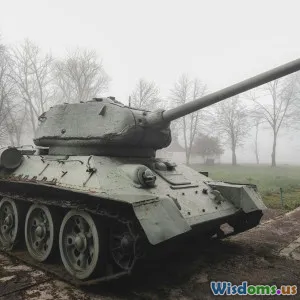
Cold War Tank Armor Innovations That Changed History
9 min read Explore groundbreaking Cold War tank armor innovations that redefined armored warfare and shaped modern military defense systems. (0 Reviews)
Cold War Tank Armor Innovations That Changed History
The Cold War era — spanning roughly from 1947 to 1991 — was a time of intense geopolitical tension, where the superpowers of the United States and the Soviet Union vied not only in nuclear capabilities but also on the conventional battlefield. Central to these preparations was the evolution of armored warfare, particularly innovations in tank armor technology that sought to overcome increasingly lethal anti-tank weapons and redefine survivability on the front lines.
Introduction: Armor at the Crossroads of Conflict
As post-World War II tanks rapidly improved in firepower and mobility, their vulnerability began increasing because of advances in anti-tank weaponry such as shaped charges and kinetic energy penetrators. The Cold War became a crucible for innovation — engineering solutions designed to tip the scales in armored vehicle defense. Some of these innovations not only impacted the outcome of hypothetical battles during the Cold War but continue to influence tank design worldwide.
Let’s explore the key armor developments which not only preserved tank crews but changed the very nature of armored combat.
Composite Armor: Breaking the Steel Barrier
What is Composite Armor?
Traditional tank armor, such as rolled homogeneous armor (RHA) steel, while tough, faced limitations against shaped charges and armor-piercing rounds. Composite armor emerged as a layered approach, combining different materials like ceramics, metals, and plastics to disrupt penetrators more effectively.
Early Developments and Breakthroughs
The British were pioneers with their Chobham armor in the late 1960s and 1970s. Named after the Chobham Common research facility, this armor combined ceramic tiles embedded between steel plates. Ceramics were especially effective at shattering shaped charges.
The Challenger 1 and later Challenger 2 tanks employed versions of this armor, setting new standards for survivability. The U.S. soon followed, incorporating composite armors in the M1 Abrams tanks that used layers of ceramics, steel, and fiberglass.
Why Was It Revolutionary?
Unlike uniform steel plates, composite armor:
- Reduced overall weight while increasing protection.
- Improved resistance against both kinetic and chemical energy rounds.
- Enhanced energy absorption through varied material properties.
Dr. W. D. Knott, a British armor physicist, stated, “Composite armor was the first real paradigm shift since sloped steel— it balanced protection with weight, allowing tanks to remain mobile and protected.”
Real-World Impact
During conflicts such as the Gulf War (post-Cold War but heavily influenced by Cold War tech), M1 Abrams tanks demonstrated remarkable resistance to Iraqi T-72 shells. The composite armor successfully absorbed or deflected rounds designed to pierce conventional steel armor.
Explosive Reactive Armor (ERA): A Counterattack Against Shaped Charges
Origins and Mechanism
Explosive Reactive Armor (ERA) was introduced as a direct countermeasure to shaped charge warheads which constituted the major threat for tanks. It comprises explosive-filled tiles mounted on the external surface of the tank. When a shaped charge warhead hits, the explosive detonates outward, disrupting the penetrator jet before it impacts the main armor.
ERA was first developed and fielded in the Soviet Union during the late Cold War, notably on vehicles like the T-64, T-72, and later T-80 tanks.
Advantages and Tactical Significance
- ERA could be retrofit onto existing tank designs, improving survivability without a complete redesign.
- Significantly increased protection against anti-tank missiles and rocket-propelled grenades (RPGs).
- Forced adversaries to develop tandem-charge munitions.
As Russian tank designer Alexander Morozov once remarked, “ERA was the response to changing battlefield realities, reflecting a dynamic arms race between protection and penetration.”
Limitations and Evolution
While ERA was revolutionary, it had downsides:
- Detonations could be hazardous to infantry close to the tank.
- Single-use tiles needed replacement after impact.
- Less effective against kinetic energy penetrators like APFSDS (Armor-Piercing Fin-Stabilized Discarding Sabot) rounds.
Nonetheless, ERA innovations continued, culminating in the development of non-energetic reactive armor (NERA) and dynamic armor.
Sloped Armor and Shape Optimization
Principle of Sloping Armor
Sloping armor was not new during the Cold War but was refined through increased understanding of physics and material science to optimize energy dispersion.
Sloped armor deflects incoming rounds, effectively increasing the path length a projectile must travel to penetrate and reducing its penetrating power. The Soviet T-55 and T-62 showed early implementation, but the T-64 and T-72 refined this principle alongside ERA.
Example: Soviet Innovations
The Soviet Union optimized hull and turret shapes, integrating complex angular surfaces to maximize effective armor thickness without adding excessive weight.
For instance, the T-64B tank introduced improved composite inserts behind highly sloped armor plates, making it a formidable adversary to NATO counterparts.
Active Protection Systems (APS): The Next Frontier
While strictly outside traditional armor, advances during the Cold War in sensing and counteracting incoming threats led to early concepts of Active Protection Systems which detect and neutralize incoming missiles/projectiles before impact.
Although full deployment became more common post-Cold War, foundational technologies like radar and infrared sensors, alongside automatic countermeasures, began during this period.
The Legacy: How Cold War Innovations Shaped Modern Armored Vehicles
The Cold War's tank armor innovation race culminated in design philosophies defining modern main battle tanks:
- M1 Abrams, Leopard 2, and Challenger 2 in the West incorporated composite and sloped armor.
- Soviet innovations, initially shadowed by secrecy, later influenced Russia’s T-90 and other platforms.
These designs continue to evolve but retain the Cold War breakthroughs as their foundation.
Conclusion: Armor Innovations as a Mirror of Global Tensions
The Cold War era was more than just nuclear standoffs; it was a continuous arms race with advancements like composite armor, ERA, and optimized geometry tipping battlefield balances. These innovations did not merely serve to protect—they reshaped armored warfare tactics, forced adversaries to invent new threats, and inspired continuous technological advancements leading into the 21st century.
Reflecting on this history offers valuable lessons: in military engineering, as in diplomacy, adaptation and innovation dictate survival and influence. The tank armor innovations of the Cold War period were not just technical triumphs—they were emblematic of a global struggle to anticipate, adapt, and dominate in rapidly changing conflict landscapes.
References & Further Reading:
- Steven J. Zaloga, Armored Thunderbolt: The U.S. Army Sherman in World War II (detailed insight into armor evolution leading into Cold War)
- Anthony Tucker-Jones, Taste of the Cold War: Soviet and Western Tank Developments (technical deep dive into armor and tank design)
- Jane’s Armour and Artillery Series (annual armor data and system reviews)
- Interviews with British & Russian tank designers archived in military history journals
Harnessing Cold War innovations continues to inform contemporary and future tank design—demonstrating how history fuels progress.
Rate the Post
User Reviews
Popular Posts










